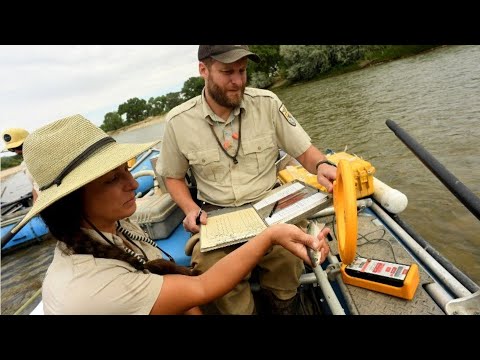Exploring Life: Biologist Career and Salary

Biologist Job Description Template
A biologist is a scientist who studies living organisms and their interactions with the environment. Their main role is to conduct research to gain a better understanding of the natural world and contribute to the advancement of knowledge in the field of biology. Biologists work in various settings such as laboratories, field research sites, universities, and government agencies. One of the key responsibilities of a biologist is to design and conduct experiments to investigate different biological phenomena. This involves developing research questions, formulating hypotheses, collecting and analyzing data, and drawing conclusions based on the findings. Biologists also need to keep detailed records of their experiments and findings, as well as present their results through scientific publications and conferences. In addition to research, biologists may also be involved in teaching and education. They can teach biology courses at universities or secondary schools, where they impart their knowledge and passion for the subject to students. Biologists may also develop educational materials and resources to enhance the understanding of biology among the general public. Another important aspect of a biologist’s job is conservation and environmental management. They study the impact of human activities on ecosystems and work towards preserving biodiversity and protecting endangered species. Biologists collaborate with environmental agencies and organizations to develop conservation strategies and policies, as well as assess the environmental impact of development projects. In summary, a biologist plays a crucial role in advancing our understanding of the natural world through research, education, and conservation efforts. They apply scientific methodologies to study living organisms and contribute to various fields such as medicine, agriculture, and environmental science.Biologist Responsibilities
- Studying and researching living organisms and their characteristics
- Conducting experiments and using scientific equipment to gather data
- Analyzing and interpreting data to draw conclusions and make scientific predictions
- Developing and testing hypotheses
- Writing research proposals and securing funding for research projects
- Designing and implementing experiments to test hypotheses
- Collecting samples and specimens for analysis
- Performing laboratory tests and experiments
- Using microscopes and other scientific equipment to observe and study organisms
- Recording and analyzing data using computer software and databases
- Publishing research findings in scientific journals
- Presenting research findings at conferences and other scientific events
- Collaborating with other scientists and researchers on interdisciplinary projects
- Teaching and mentoring students in biology-related subjects
- Keeping up-to-date with advancements in the field of biology through continuous learning and professional development
- Ensuring laboratory safety protocols and ethical guidelines are followed
Biologist Requirements
How Much Does A Biologist Make?
Biologist Salary
| Position | Median Salary (USD) |
|---|---|
| Research Assistant | 45,000 |
| Laboratory Technician | 50,000 |
| Field Biologist | 55,000 |
| Wildlife Biologist | 60,000 |
| Environmental Consultant | 65,000 |
Biologists are professionals who study living organisms and their interactions with the environment. They contribute to scientific research, conservation efforts, and various industries such as healthcare and agriculture. The salaries of biologists vary depending on their level of education, experience, and the specific field they specialize in. The table above provides an overview of median salaries for different positions within the field of biology. It is important to note that these figures are approximate and can vary based on factors such as geographical location and job market conditions.
Biologist Salaries by Country
Top Paying Countries for Biologist
| Country | Average Salary (USD) |
|---|---|
| Switzerland | 100,000 |
| United States | 85,000 |
| Australia | 80,000 |
| Canada | 75,000 |
| Germany | 70,000 |
A biologist’s salary can vary significantly depending on the country they work in. According to available data, Switzerland is the top paying country for biologists, offering an average salary of $100,000 per year. The United States follows closely with an average salary of $85,000, while Australia offers around $80,000 on average. Canada and Germany complete the top five, with average salaries of $75,000 and $70,000 respectively.
A video on the topic Biologist
Video Source : Black Swan BiologyInterview Questions for Biologist
1. What is the role of a biologist?
A biologist studies living organisms and their interactions with their environment. They may conduct research, perform experiments, and analyze data to gain a deeper understanding of various biological processes.
2. What are some key skills required to be a successful biologist?
Some key skills required to be a successful biologist include critical thinking, problem-solving, strong analytical skills, attention to detail, good communication skills, and the ability to work well in a team.
3. What are the different branches of biology?
The different branches of biology include genetics, microbiology, ecology, botany, zoology, biochemistry, molecular biology, evolutionary biology, and many more.
4. Can you explain the process of photosynthesis?
Photosynthesis is the process by which green plants, algae, and some bacteria convert sunlight, carbon dioxide, and water into glucose (a type of sugar) and oxygen. This process takes place in the chloroplasts of plant cells and is vital for the production of oxygen and food.
5. How does natural selection work?
Natural selection is the process by which certain traits or characteristics become more or less common in a population over time. It occurs because individuals with advantageous traits are more likely to survive and reproduce, passing on these traits to their offspring. Over generations, these traits become more prevalent in the population.
6. What is the role of DNA in living organisms?
DNA (deoxyribonucleic acid) contains the genetic instructions that determine the development, functioning, and reproduction of all known living organisms. It carries the hereditary information that is passed from parents to offspring and is responsible for the inheritance of traits.
7. How do biologists contribute to environmental conservation?
Biologists contribute to environmental conservation by studying ecosystems, monitoring endangered species, conducting research on pollution and climate change, and developing conservation strategies. They also work towards sustainable practices and educate the public about the importance of biodiversity and environmental protection.
8. Can you explain the process of mitosis?
Mitosis is a type of cell division that results in two genetically identical daughter cells. It consists of several stages: prophase (chromosomes condense), metaphase (chromosomes align at the center), anaphase (chromosomes separate and move to opposite ends), and telophase (two new nuclei form). Finally, cytokinesis occurs, where the cell divides into two separate cells.
9. What is the significance of biodiversity?
Biodiversity refers to the variety of life on Earth, including plants, animals, and microorganisms. It is crucial for maintaining ecosystem stability, as different species play unique roles in the environment. Biodiversity also provides ecosystem services such as pollination, nutrient cycling, and climate regulation.
10. How can biologists contribute to medical advancements?
Biologists contribute to medical advancements by researching diseases, studying the human body at a cellular and molecular level, developing new drugs and therapies, and understanding the genetic basis of various conditions. Their research helps in the prevention, diagnosis, and treatment of diseases, leading to improved healthcare outcomes.






